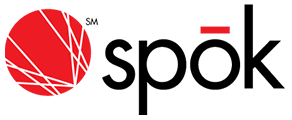Blog
3 hospital contact center metrics that indicate the health of your operations
It’s time for your contact center’s annual wellness visit. While you won’t need a stethoscope, this checkup will involve assessing three important metrics that give you valuable insight into how well your team is supporting internal and external callers. They’re an essential pulse check for understanding the role of the contact center in shaping the overall customer experience and perception of your organization. A positive experience can enhance patient satisfaction, while a negative one can damage your brand if the caller is vocal on social media.
Why contact center metrics matter
When callers reach out to a hospital contact center for information or assistance, it’s likely they’re already in a stressful situation due to their own health or that of a loved one. Whether they need directions, the hours of the cafeteria, or want to be connected to a patient’s room, every interaction should be done as swiftly and courteously as possible.
Depending on the organization, call center agents field annual call volumes in the hundreds of thousands or millions. Efficiency and customer service excellence are the names of the game for all callers — patients, family members, or employees. Understanding and analyzing these metrics will help you assess both team and individual agent performance as a basis for your continuous improvement initiatives.
1. Call abandonment rate
When callers aren’t connected to a contact center agent quickly enough, they can become frustrated and hang up. They may try again later or attempt to find what they need through another avenue. Either way, abandoned calls are a metric to track as they reflect negatively on your organization.
A high call abandonment rate indicates you may need additional staff, training, or technology to enable your team to handle calls faster. Learn how Spok technology helped University of Utah Health to reduce its rate from 4% to 2.7%.
2. First response time
Most organizations have phone trees in place to route calls, which eventually will give the option of speaking to a live agent. The amount of time between the call being connected and when the caller is able to talk with an agent is a good indication of efficiency. The longer the average wait time, the more room you have for improvement.
3. Average call handling time
Some agents can process or transfer calls quickly, while others take longer to find the right information to address the caller’s request. To be sure, seasoned contact center operators can help callers more easily than newer employees, who may require additional training on where to find helpful resources or the best way to leverage existing technology including the console, enterprise directory, or on-call schedules.
The role of contact center technology
Once you determine a baseline for how well your team is performing, you can address substandard metrics with a targeted training and/or technology plan. This could include investment in interactive speech technology that automates routine requests and frees agents to devote time to more in-depth caller requests. McKinsey & Company reported this type of technology can improve customer satisfaction rates by 10% as callers are connected to what they’re looking for much more quickly.
Additionally, you may look to call recording to evaluate how individual agents handle a variety of interactions. This solution provides insight into where additional training may be needed to improve efficiency and call handling skills.
Contact the Spok team to learn more about generating contact center improvements through an integrated approach to healthcare communications.







